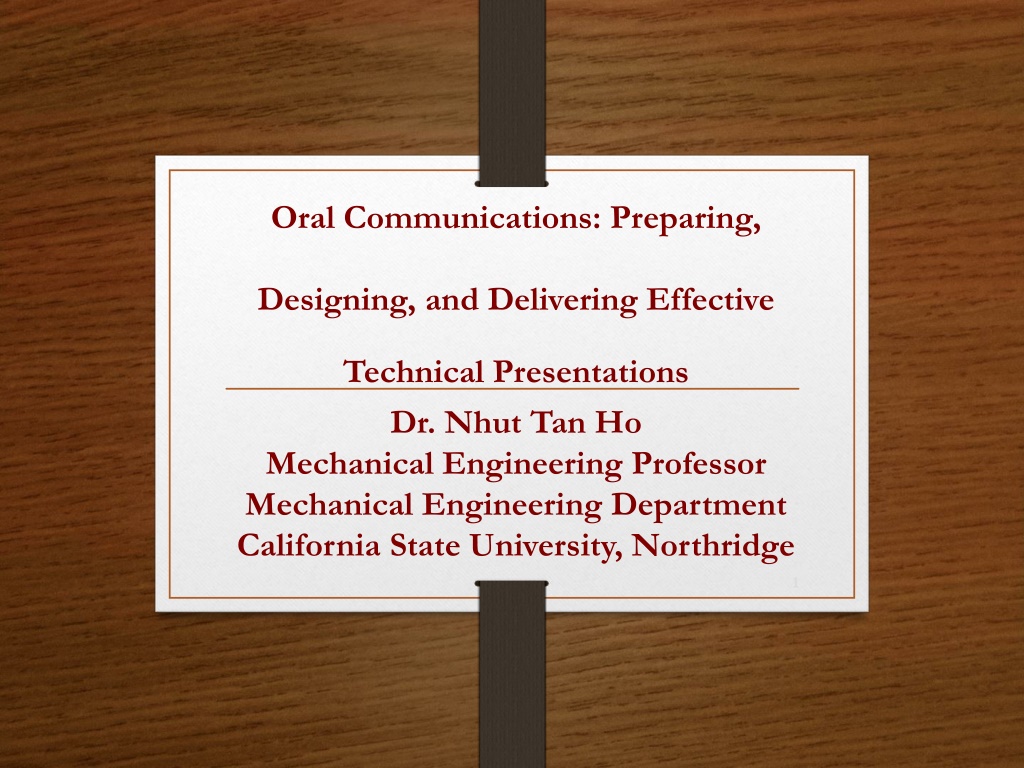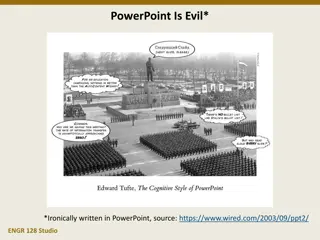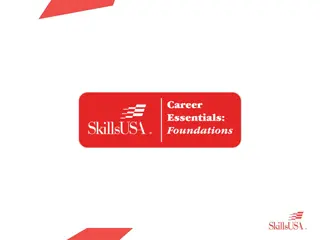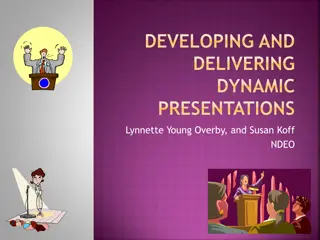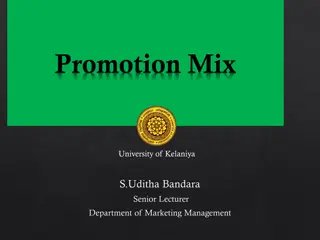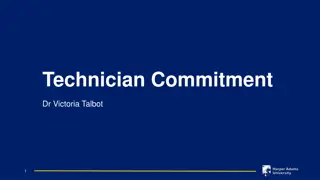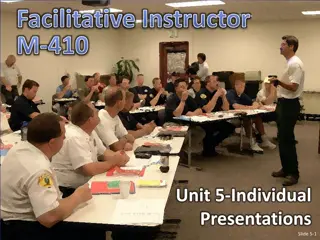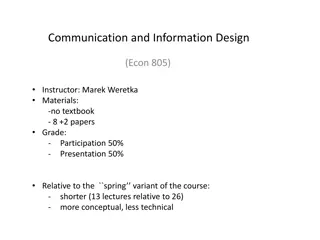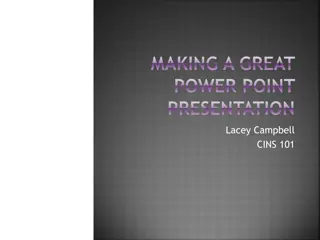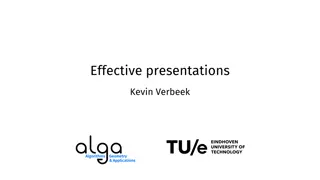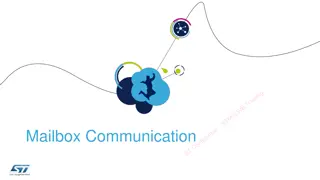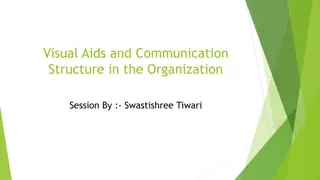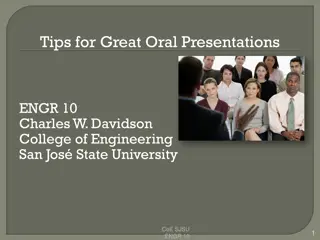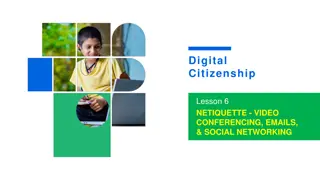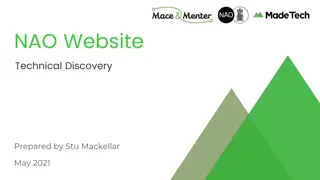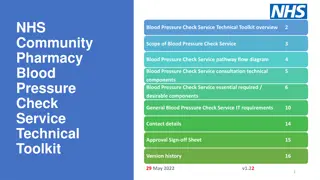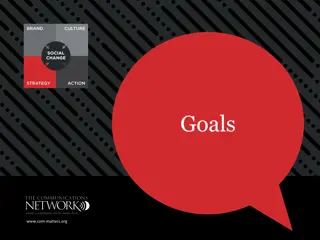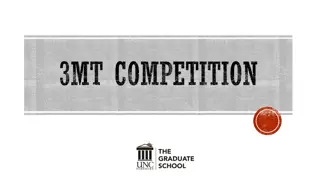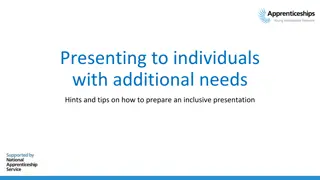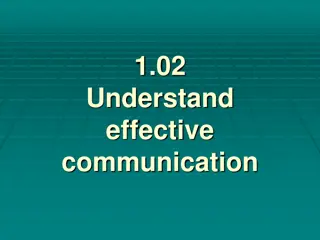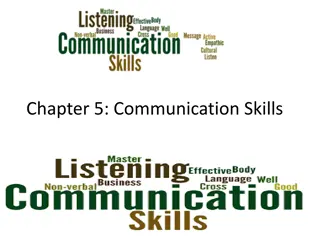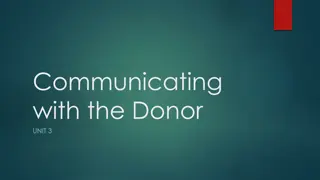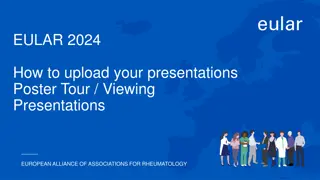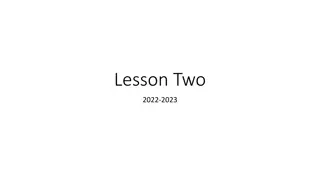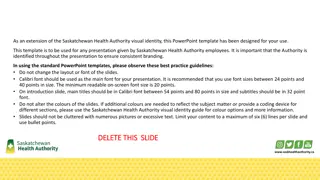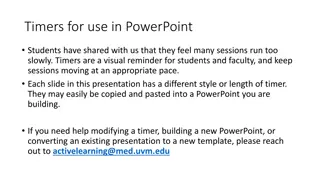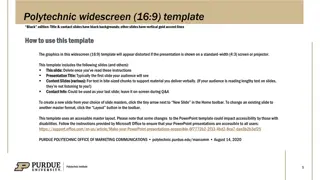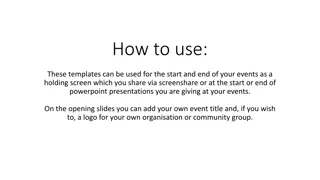Mastering Technical Presentations for Effective Communication
Enhance your technical presentation skills with insights on preparing, designing, and delivering effective presentations. Learn the art of handling questions, understand the audience's expectations, and master your material for a successful delivery. Gain valuable tips on practice techniques to improve confidence and delivery quality.
Download Presentation

Please find below an Image/Link to download the presentation.
The content on the website is provided AS IS for your information and personal use only. It may not be sold, licensed, or shared on other websites without obtaining consent from the author. Download presentation by click this link. If you encounter any issues during the download, it is possible that the publisher has removed the file from their server.
E N D
Presentation Transcript
Oral Communications: Preparing, Designing, and Delivering Effective Technical Presentations Dr. Nhut Tan Ho Mechanical Engineering Professor Mechanical Engineering Department California State University, Northridge 1
Lecture Objectives and Activities Introduce the process of preparing, designing, and delivering technical presentations Introduce techniques for handling questions and answers Activities: Evaluate presentations and present comments to class 2
Adults Recall 10% of what one reads 20% of what one hears 30% of what one sees 50% of what one sees and hears 80% of what one says 90% of what one says while doing Typical Lecture! Source: Sharpe, C. (Ed.). (1998). The New basic training for trainers. Alexandria, VA: American Society for Training and Development. 3
Advance Preparation Learn the core reason for the presentation and your sponsor s expectations Understand your audience and their expectations Know your material Inspect the room, your equipment, and other logistics 4
What is Expected of You? Time limits? Purpose and scope of your presentation? Focus of program, if more than one speaker? 5
Who is Your Audience? What does your audience expect from you? Number of people? Their background? Who are your supporters and adversaries? What questions would you expect to be asked? 6
Know Your Material No other person knows your work better than you Anticipate questions and prepare answers Read current work of prominent/powerful audience members and understand its connection to your work 7
Practice, Practice, Practice Practice out loud in front of a mirror and use a timer Practice without notes Practice in front of colleagues Practice in the actual presentation room with all equipment or in one as similar as possible What would you delete if time was shortened by 1, 5, or 10 minutes? Practice doing so 8
Room and Equipment What presentation equipment and technical support is available? Computer, CD-ROM, floppy, Zip Disk, overhead, microphone, pointer, VHS video ? Is it compatible to yours? Arrange to practice with the equipment well before your presentation Find out who can help with equipment, information, and administrative tasks manners matter! 9
Room and Equipment - continued Bring cables, adapters, and power supplies Turn off screen saver Plan for problems Bring electronic copies of your presentation in multiple formats, e.g., CD-ROM and floppy diskette Post presentation on your website for downloading Bring low tech backups, e.g., transparencies and a paper copy of your presentation 10
Other Logistics Carry a card inscribed with key points of presentation Know where to point audience to sources of supplementary information, e.g., website URLs and your business card 11
Your Appearance You could be making your first impression be clean and neat and control unmanageable hair Find out what clothing is appropriate Do not wear dirty, crumpled, or distracting clothing revealing, torn, or loud Practice in the clothing you intend to wear - is it easy to move in and comfortable? If you will wear a microphone you will need pockets or belt and a place to pin it 12
Organizing Your Presentation Organize your talk around a story What questions will you answer? Why are you interested? Why should your audience care? What is the context of your work? Describe the big picture, reduce it to smaller parts, expand each part, and reconstruct the big picture Focus on content not clich phrases, graphics, and animation Remember the three Bs Be brief, be brilliant, & be gone! 13
A Typical Technical Talk Introduction Motivate and define your problem Describe your research contribution Discuss outline of your talk Body Outline results and their significance Provide a high-level explanation or justification of results 14
A Typical Technical Talk - continued Technicalities Present one or two important equations/proofs/data Discuss it in detail and show its depth and importance Conclusion Summarize key points Discuss future research and its significance 15
Designing Slides Rule of thumb 1 slide per minute Keep it simple Complex concept less dense slide 20 to 50 words per slide Use 20 point font or larger, 12 point is too small Give attribution to work by others, i.e., quotations and citations 16
Slides Enhance Your Presentation Start with a title slide with your name, title, and institution If presentation more than 10 15 minutes include an outline slide 3 to 5 major points of presentation Keep each topic to 3 12 words End with a summary slide 1 to 3 take home messages, one sentence each Assume that this is all that audience will remember 17
Presenting Your Slides Do not read from slides Point to important parts with a pointing device and turn back to face audience Do not speak more than 1 2 minutes without a slide If a colleague is turning your slides practice with that person 18
Presenting Data Include slides with primary data Data gives you credibility Show representative samples of your data In general, make one point per data slide Define graph axis and units 19
Presentation Basics Establish credibility identify your organization Face the audience and make eye contact Speak slowly, loudly, and clearly Try not to um and ah practice helps Maintain relaxed body language No pacing Do not do nervous things with your hands Define specialized vocabulary Avoid last minute changes 20
Presentation Basics - continued Speak with conviction and confidence Hydrate but Use technology sensibly Indicate quotations with voice not fingers Respect your audience and the clock Do not apologize Anticipate and prepare for questions Rehearse, rehearse, rehearse, rehearse, rehearse Germano, W. (2003, November 28). The Scholarly Lecture: How to stand and deliver. The Chronicle of Higher Education, p. B15 21
The Q & A Always repeat the question It ensures everyone has heard it It ensures that you understand it It gives you time to think Take the opportunity to delve deeper into the topic 22
If You Do Not Know the Answer Do not freeze, apologize, lie, or act flustered Try one of these responses That s an excellent question. We haven t had the resources to investigate that yet. I don t have that information here, but I can look it up and get back to you. One possibility might be (insert your speculation) We didn t address that question, but we did do (insert something relevant that you did) I am not familiar with that study, but I do know (insert something relevant that you do know) 23
The Hostile Question Your goal is to disarm loaded questions Do not take it personally Remain calm Disagree but do not disrespect If your answer is challenged, be polite and maintain your position and control, ask questioner to explain the question and its relevancy to your topic If questioner continues to push, state that it would be better to continue the discussion after the presentation 24
The Audience Wants to Learn from You! You are in control and confident You prepare and practice You anticipate problems and mitigate them 25
Active Learning Activity Examine the presentation provided in your team folder and make two lists The areas in the presentation that were well done The areas that need improvement Present your lists/comments to the class 26
Lecture Recap and Assignment Preparing, designing, and delivering an effective presentation require Understanding of many logistics: audience, environment, expectations, equipment, appearance Careful planning for contents, questions and answers, disruptions Effective delivery techniques Assignment: Problem 14.1 for presentation to class 27
